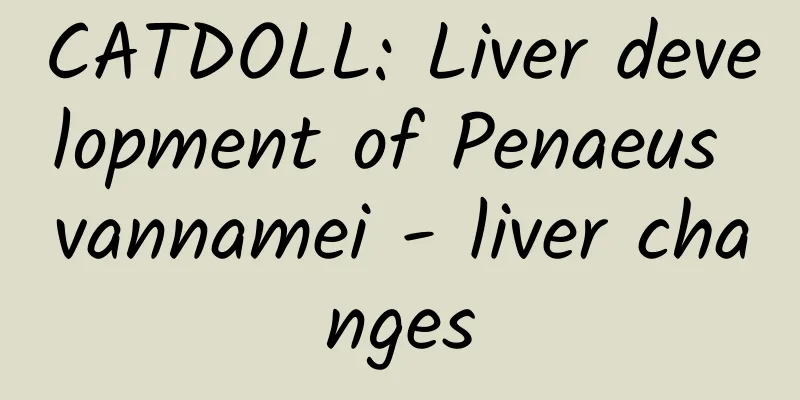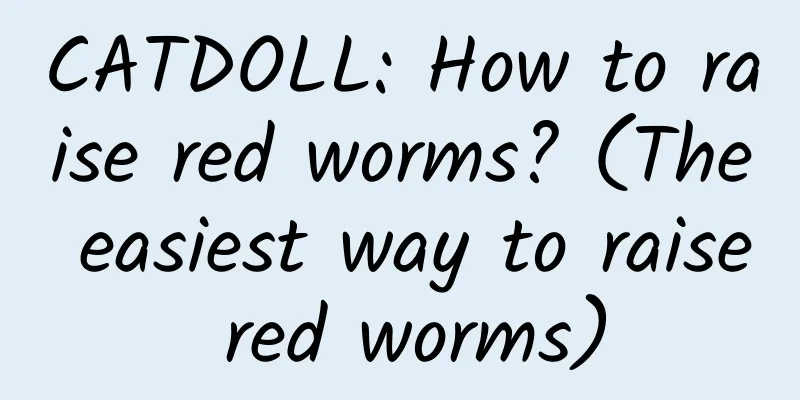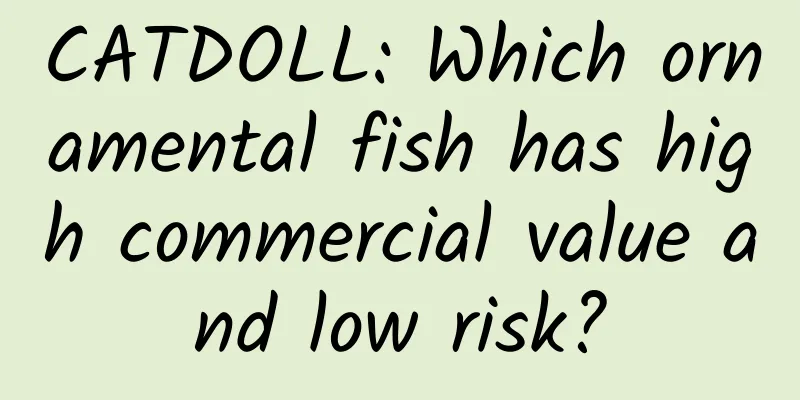CATDOLL : CATDOLL: Liver development of Penaeus vannamei - liver changes

1. Development process of the liver of Penaeus vannamei - liver changesUnlike other animals, shrimps have livers but no gallbladders. Therefore, the liver needs to undertake many tasks such as detoxification, excretion, digestion, and immunity. During the development of the liver, it is necessary to pay close attention to changes and make timely adjustments. If the liver does not develop well during the transition stage, future breeding will be more difficult. According to observations and studies in previous years, there are four stages of shrimp liver development: Homogeneity stage, material transfer stage, coating stage, and yellow coating stage. ① Homogeneous stage: The 2nd to 15th day after seeding is the feeding powder stage, and the shrimp body length is 0.8 to 2 cm. During this stage, the liver color of the shrimp fry changes with the color of the food, that is, the seedlings are fed with shrimp flakes, and the liver color changes to black and red, and the color changes to powder feed, which is the homogeneous stage. ② Feed conversion period: 15-20 days after seedlings are released, the body length is 2.5-3 cm. The shrimps change from eating powder feed to eating granular feed, and the liver color also changes slightly, from the original light yellow to dark yellow. At this stage, pay attention to adjust the water quality to a fresh state. ③ Encapsulation period: 20-25 days after seedlings are released, the body length is 3-4 cm. The front part of the hepatopancreas is the color of feed, and a white capsule will appear at the end of the hepatopancreas, gradually wrapping from the bottom of the hepatopancreas to the top. The white capsule should not exceed one-third of the hepatopancreas. ④ Yellow membrane stage: 35 days after seedling release, the body length is 5-6 cm. The hepatopancreas also gradually changes from white membrane to yellow membrane, which is the yellow membrane stage. The entire liver transfer process of shrimp has been completed. It should be noted that shrimps in the encapsulated and yellow membrane stages feed fiercely and are prone to liver diseases, such as liver enlargement, fatty liver, red liver and other problems. There are many causes of hepatopancreatic lesions, and adjustments need to be made based on the inducing factors. If the pathological factors are irreversible, or the proportion of the lesions is large, stop breeding directly. Even if liver problems occur in the seedling stage and the condition has been corrected, it will be difficult to make a profit if there are slight water changes and other problems in the later stage. In the same shrimp fry state, we fed shrimp feeds from different manufacturers and observed the development of the hepatopancreas. Although both developed normally, the hepatopancreas of the shrimp fed with high-quality feed looked better. Not only was it clearer, but the intestines were also thicker. (This is a one-sided comparison without multiple comparative experiments) Teachers, you are welcome to correct me. Helping others is a traditional Chinese virtue. 2. How to improve the success rate of shrimp seedlings? What technologies can be used as reference?There is a saying in shrimp farming that "successful seedling cultivation is equal to 30% successful farming". On the one hand, it shows that seedling cultivation is a very important link in shrimp farming. On the other hand, it also shows that there are some factors that limit the "turnover" in the seedling cultivation process, resulting in uneven success rates of local seedling cultivation, which affects the final farming benefits of shrimp. "Turning over" refers to the process of shrimp seedlings and larvae undergoing metamorphosis to shrimp larvae, which is a local term. After years of actual investigation and summary of ponds, we proposed a "three-step" seedling cultivation focus to improve the shrimp seedling "turnover" rate. 1. Clever Fertilizer and Water 1. Since a large amount of pond cleaning drugs (bleaching powder, copper sulfate, etc.) are used after the water is taken in, there are residues in the pond, which affect the reproduction of algae. The organic acid detoxification product "Bishui'an" should be used to thoroughly detoxify and reduce the residual toxins that affect fertilization and water, and then fertilize the water to improve the fertilization effect. 2. For ponds with clear and thin water, an appropriate amount of water from other fish ponds or rivers (5-6 cm) can be introduced. The purpose is to introduce some algae species and then apply fertilizer, so that the algae reproduce quickly. 3. Choose the right fertilizer and water products, such as "Fertilizer Peptide II" or "Algae Ansheng III", which are soluble organic fertilizers. The fertilizer and water effect is stable after use. Reduce the use of chemical fertilizers (compound fertilizers, urea, etc.), which can easily cause rapid changes in water bodies and exceed water quality indicators after use, which will affect the survival rate of seedlings. 2. Nutrition 1. Bait nutrition Since the shrimp fry need to be fed with water and nourished for 2-3 days after hatching, it is necessary to replenish the bait with good suspension and rich nutrition in time. "Libaiduo III" + "Aquatic Attractant Yeast" can be directly used as the bait for the shrimp fry to filter feed, and it should be fed continuously for 8-10 days to ensure the growth and development of the shrimp fry. 2. Water nutrition It only takes 8-10 days for shrimp fry to grow from zoea to shrimp larvae, and they need to molt 8-9 times. This shows that the demand for water nutrients is more urgent at this time, especially the demand for calcium. Therefore, during the seedling rearing process, supplementing with organic calcium "vital calcium" once every 3-4 days can effectively improve the survival rate of shrimp fry metamorphosis. 3. Disease prevention It is easy to neglect disease prevention during seedling breeding, resulting in casualties during clear release (releasing shrimp fry) or raw pond (directly releasing shrimp with eggs), shell rot, white tail, tail rot, enteritis and other symptoms, and the treatment effect is not ideal. Therefore, in breeding practice, we have come to the conclusion that disease prevention should be the main approach. Some drug residues in the water quality of shrimp seedlings are very harmful to shrimp seedlings. For farmers, whether it is shrimp seedlings or other aquatic products, once the water quality is polluted and there are pesticides in it, it may cause large-scale deaths of some cultivated biological seedlings, which brings great losses to aquatic farmers. Therefore, for shrimp farmers, when choosing a location for shrimp seedlings, they must choose a place with no pollution, no drug residues, and sufficient water sources, so as to ensure the survival rate of shrimp farming. It is necessary to strengthen the protection and filtration of water sources during the cultivation process in order to improve the success rate of cultivation. Cultivation technology, water source control, technical filtration technology, disease prevention technology, feed feeding technology. To improve the success rate of the vaccine, we must first choose the right fertilizer and water products. Supplement certain nutrients for the shrimp. 3. How to cultivate giant tiger shrimp larvae?The larval culture technology of Penaeus monodon is basically the same as that of Penaeus chinensis. (1) Larvae density The density of nauplii of Penaeus monodon is determined by the conditions and technical level of the nursery, especially by the conditions of bait and water quality. Generally, 100,000 to 120,000 nauplii are placed in small nursery ponds (10 to 20 m3), and about 150,000 nauplii are placed in large nursery ponds (more than 40 m3). (2) Water temperature regulation The water temperature for the cultivation of giant tiger shrimp larvae is required to be above 25℃, the optimum water temperature is 28-30℃, and the highest temperature is about 33℃. High temperature cultivation can accelerate the growth of shrimp larvae, shorten the cultivation time, and increase the number of larvae. However, high temperature cultivation will affect the health of shrimp larvae and make them prone to disease during cultivation. When the water temperature is 27-29℃, the nauplii will undergo 6 molts and will transform into larvae in about 36-50 hours. The larvae will take 3-5 days to molt 3 times and then turn into mysid larvae. The mysid larvae will take 5-7 days to molt 3 times and then turn into shrimp larvae. (3) Larval management ① Nauplii. Nauplii do not eat. However, prepare food for the larvae. When they hatch into nauplii, inoculate them with unicellular algae and add nutrients: 1 mg/L potassium nitrate, 0.1 mg/L sodium silicate, 0.1 mg/L disodium hydrogen phosphate, and 0.01 mg/L ferric chloride. The survival rate of nauplii is about 90%. ②_-shaped larvae. During the_-shaped larvae stage, diatoms can be cultured in the same pond or in separate ponds to meet the feeding needs of the larvae. The density of unicellular algae is not large, and an appropriate amount of spirulina powder and yeast powder can be supplemented. Oyster fertilized eggs can also be fed directly, but do not feed excessively to avoid water corruption. When feeding oyster eggs, the pond water should be exchanged about 1/3 every day. When the larvae develop to the_-shaped 2-3 stage, feed rotifers appropriately; at the 3rd stage, feed a small amount of scalded Artemia newly hatched larvae. The survival rate of_-shaped larvae is low, only 30% to 70%. ③ Mysid shrimp larvae. The food during this period is mainly animal-based, and a certain concentration of unicellular algae is maintained. Rotifers, Artemia nauplii, copepods, etc. are mainly fed. If algae are cultivated in the same pond, the seawater is filtered with a 200-mesh silk screen and then inorganic fertilizer is applied. That is, 100 mg/L potassium nitrate, 10 mg/L potassium dihydrogen phosphate, 1.0 mg/L sodium silicate (potassium), and 5 mg/L ferric chloride. Generally, fertilizer is applied once every two days, and the water color should be brown. Unicellular algae are controlled at more than 50,000/ml. It can also be supplemented with artificial microcapsule series granular feeds of giant tiger shrimp or other artificial microcapsule granular feeds of shrimp, yeast and other substitute baits. Commonly used ones are Japanese shrimp larvae feed BP, shrimp flakes, and giant tiger shrimp fry micro-granular feeds and shrimp fry treasures produced in Taiwan Province. The survival rate of mysid shrimp larvae is 70% to 80%. ④ Postlarvae. The larvae can metamorphose into postlarvae after 10 to 11 days, and at this time they are completely transformed into shrimp fry. The early stage of postlarvae (P1 to P5) is mainly fed with Artemia nauplii, artificial microcapsule granular feed, shrimp, crab, shellfish meat, etc. Later, when the postlarvae develop to the P5 to P10 stage, they have benthic habits and the larvae like to eat large animal bait. At this time, they can be completely fed with fish, shrimp, shellfish, cuttlefish meat or artificial microcapsule granular feed. The feeding amount is equivalent to 200% of the body weight of the shrimp fry, that is, the daily feeding amount for every 10,000 postlarvae is about 10 to 30 grams. It is advisable to feed in small amounts and multiple meals. The survival rate of postlarvae is about 80%. If P20 is released from the pond, the survival rate of postlarvae is about 60%. (4) Water quality regulation The quality of water directly affects the health and metamorphosis of larvae. The larvae of Penaeus monodon have strict requirements on water quality, mainly the changes in factors such as ammonia nitrogen, dissolved oxygen, and pH. ① Ammonia nitrogen. Non-ionized ammonia in ammonia nitrogen is toxic to larval culture, especially mysid shrimp larvae, which are more sensitive to it. The tolerance of shrimp larvae is enhanced, but during the entire seedling period, the total ammonia is required not to exceed 0.5 mg/L. ② Dissolved oxygen. The dissolved oxygen content in the nursery pond is required to be no less than 4.0 mg/L. In order to meet the breathing needs of the larvae and the oxygen consumption of other organisms and organic matter, the whole nursery period needs to be aerated continuously. The aeration volume of the nauplii is smaller (weak boiling state), and the aeration volume is increased as the larvae develop. Especially after the shrimp larvae, the cannibalism phenomenon increases, and the aeration volume should be increased to about 2.0%. Therefore, the air stones should be set more closely, with one air stone set for every 50-70 cm square area. ③ pH. pH is the comprehensive result of physical and chemical factors and biological activities in water, and is also one of the indicators of water quality. High or low pH has adverse effects on larval cultivation. The suitable pH range for the breeding period of Penaeus monodon is 7.6-8.8. ④ Change water. To maintain and improve the water quality of the nursery pond, the methods are to change water, aerate and add appropriate drugs or additives. Usually, the breeding of Penaeus monodon requires stable water quality in the early stage. Most of them do not change water or add water in the early stage. The water is changed in the late stage of the larvae. The daily water change during the mysid shrimp larvae is 25% to 50%, and the water change in the early stage of the shrimp larvae is 50%. It will gradually increase later. If necessary, the daily water change will reach 100%. Sometimes the water is changed by draining and filling water at the same time to avoid too much change in water quality in a short period of time and the increase in the density of larvae in a short period of time, which will have adverse effects on the larvae. Some nurseries do not change water before the shrimp larvae, and insist on using unicellular algae to control the water color. Make the water in the pond light tea color in the larvae stage, tea color in the mysid shrimp larvae stage, and light brown in the shrimp larvae stage. At the same time, control the amount of feed and apply synergists to maintain good water quality. When the water in the P4-5 stage is added to more than 1.5 meters, change about 1/3 of the water every day. However, the density of shrimp fry in this method is relatively low. (5) Light control: In the larval stage, Penaeus monodon should avoid direct sunlight and strong light. If they are raised under direct sunlight, the larvae will not eat, their bodies will bend and become deformed, and the mortality rate will reach 100% after about 2 to 3 days. Stages I to II are the most sensitive, and the intensity gradually increases after stage III. The appropriate light intensity is 500 lux. After the mysid shrimp larvae, the light intensity gradually increases. After the larvae, the light intensity is equivalent to the brightness of the Chinese shrimp nursery room, about 5000 to 8000 lux. This article is from: China Agricultural Press "Protecting Natural Resources" |
<<: CATDOLL: What do river shrimp eat?
Recommend
CATDOLL: A lot of my mealworms died. They started to turn over and moved slowly. They didn't eat anything, their bodies were soft and their stomachs felt empty. I would like some advice from breeding experts.
1. A lot of my mealworms died. They started to tu...
CATDOLL: Rapid diagnosis and prevention technology of fish diseases?
1. Rapid diagnosis and prevention technology of f...
CATDOLL: Treatment and prevention of birth canal injuries in sows
Understanding sow birth canal injuries and their ...
CATDOLL: Does breeding red worms cause serious environmental pollution? (Are breeding red worms harmful to the body?)
1. Will feeding red worms pollute the water? Feed...
CATDOLL: Will chickens be poisoned if they eat flies? Why? (Will chickens be poisoned if they eat flies? Why will they die?)
1. Is it good for old hens to eat flies? There is...
CATDOLL: How to use the trawl in the Don't Starve Shipwreck DLC
1. How to use the trawl in the Don't Starve S...
CATDOLL: Market price list of farmed flies (image of market price list of farmed flies)
1. Is it easy to raise blowflies? Answer: Easy to...
CATDOLL: How to write the word bee in honey
1. How to write the word "bee" in honey...
CATDOLL: What types of fruit trees are suitable for raising cicadas (pictures of what types of fruit trees are suitable for raising cicadas)
1. What kind of tree is best for breeding cicadas...
Why does the mother cat keep licking her babies?
Reasons why mother cats keep licking their babies...
CATDOLL: What is the knowledge about razor clams?
Razor clams belong to the class Bivalvia of the p...
CATDOLL: What is the minimum temperature for goldfish?
1. What is the minimum temperature required for g...
CATDOLL: How much biogas can be produced from one ton of cow dung (how much biogas and biogas residue can be produced from one ton of cow dung)
1. How much biogas can one cubic meter of cow dun...
CATDOLL: Are there any particular requirements for keeping turtles at home?
Are there any special requirements for keeping tu...
CATDOLL: Detailed explanation of the treatment method of new hen disease to help farmers deal with it effectively
What is New Hen Disease New hen disease, also kno...









